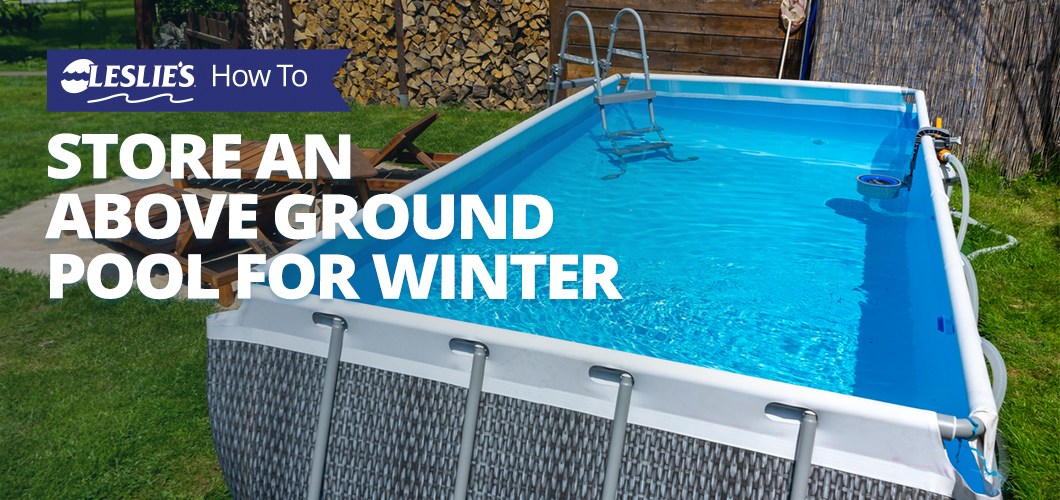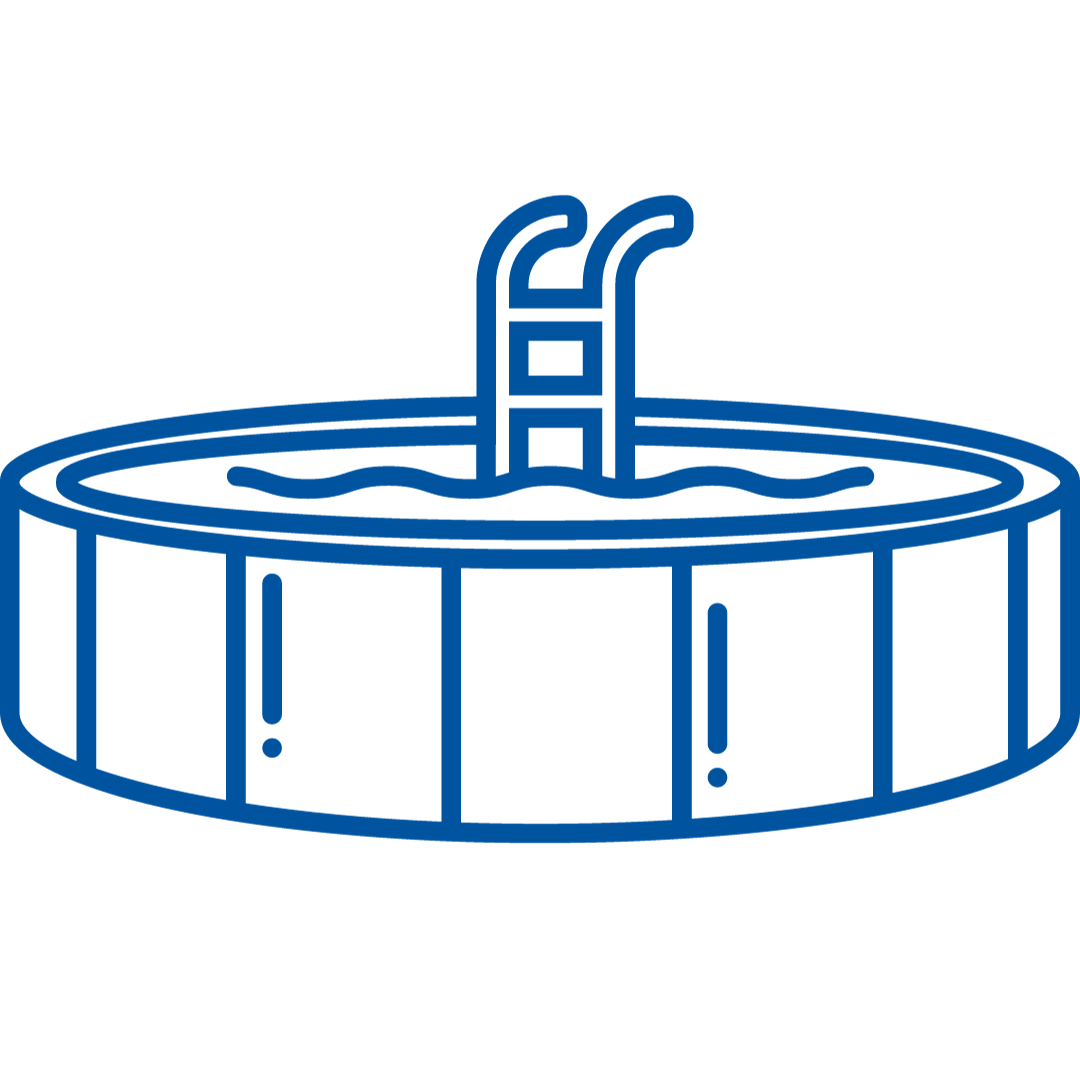
How to Store an Above Ground Pool for Winter
As the summer season comes to an end, it’s time to start thinking about preparing your pool for the colder months ahead. When it comes to an above ground pool, whether to thoroughly dry and store your pool or opt for winterization becomes the question at hand. Not all types of above ground pools need to be stored for the winter. Whether you need to take apart and store your pool depends on the type of above ground pool you own and how cold it gets in your region.
Semi-permanent steel-walled above ground pools are well equipped to withstand harsh winter conditions — and they’re also more challenging to disassemble and reassemble — so you’re better off to leave the water in and winterize them properly. However, if you happen to own a soft-sided above ground pool, such as an Intex or Bestway pool, then you might consider draining the water and storing it for the winter. Doing so helps protect the pool against freeze damage and prolongs its lifespan so you can enjoy the pool for many years to come.
If breaking down and storing your above ground pool for the winter season is the best option for your pool, keep reading! We’ve provided some useful instructions below to help guide you through the process.
How to Deconstruct and Store Your Soft-Sided Above Ground Pool
1. Remove Pool Accessories

Gather and remove all accessories, including ladders, toys, skimmers, and hoses from the pool, then prepare them for storage. This step not only shields these items from potential harm during the winter season, it also gets them out of your way for the next steps. You’ll also have the opportunity to clean and inspect each item, ensuring their optimal condition for future use.
2. Clean the Water
You’re probably thinking, “Wait a minute. I’m draining the pool anyway. Why should I have to clean up the water?” While that’s a valid argument, the last thing you want to do is have leaves, dirt, and debris sitting at the bottom of your pool when it’s completely drained (which is the next step). If you let dirt and debris sit and dry on the pool liner, cleaning it later becomes a chore.

3. Drain the Pool
The next thing you’ll need to do when storing your above ground pool is to drain out all the water. For this, you can either siphon the water using a garden hose (typically the slowest option), use a submersible pump (fastest option for larger pools), or use the drain adapter (if the pool has one) with an attachable pump hose. Keep in mind that it may take up to 6–10 hours or more to completely drain the pool of water.
BONUS TIP: It’s highly advised that you check the water chemistry before draining the pool. Local laws and authorities may have restrictions on the quality of water you drain into the main sewerage system. In addition, your lawn, trees, and shrubs may not tolerate chlorine or imbalanced pH if you want to repurpose the water. No matter what you do, ensure you meet all requirements for the drainage.
4. Disassemble Your Pool

Disassembling an above ground pool can vary slightly depending on the specific make and model of the pool, but for the most part, there are general steps to follow. This involves unhooking and draining the pump, filter, and any other equipment, as well as taking apart the frame (or simply deflating the pool if it's inflatable). Be cautious to not damage the pool material during this process.
Most simple above ground pools shouldn’t be too complicated to take apart, but you can always refer to the manufacturer’s instructions if you run into trouble.
5. Clean Your Pool Liner
Now is a good time to clean your pool wall or liner and prepare it for storage. It’s never a good idea to store anything when it’s dirty or wet, as it may accumulate mold while stored away. If the manufacturer’s instructions don’t provide specific instructions for cleaning it at the end of the season, you can’t go wrong with a gentle cleansing solution. Mix one part detergent (dish soap works great) with ten parts water, and pour some on your above ground pool liner. Then use a pool brush or other soft nylon brush to clean the liner. After properly cleaning the liner, hose it down to rinse off all the cleaning solution. Then, allow the liner to dry completely, which usually takes about 24 hours.

6. Fold and Store Pool in a Safe, Dry Place
Straighten the pool wall or liner as best as possible, folding the walls towards the center as you go. You’re looking to turn this into a square at first so it’s easier to fold for storage. This part is much easier with two people. To keep all the supports, pins, or other pool parts contained, a plastic storage tote can come in handy. Finally, it’s time to store the pool itself in a shed or another dry place for the winter. Storing the pool in a climate-controlled area, such as a garage or basement, is best.
BONUS TIP: We highly recommend placing your soft-sided pool wall or liner in a large bag or sack to keep it clean and safe. You may also consider hanging it to keep it off the ground. If rodents are a problem, place it inside a more durable storage container to keep them from chewing holes in it.
Now that your pool is stored for the winter, you can rest assured that it will be safe and ready for you when the weather begins to warm up again in the spring. Storing your pool for the winter means that it is only exposed to the elements for half the year. This generally results in your above ground pool lasting longer, allowing you and your family to enjoy it for more seasons!
Have more questions regarding caring for or storing your above ground pool? Call or stop by your local Leslie’s, or visit our Resource Center to check out our helpful above ground pool tips.